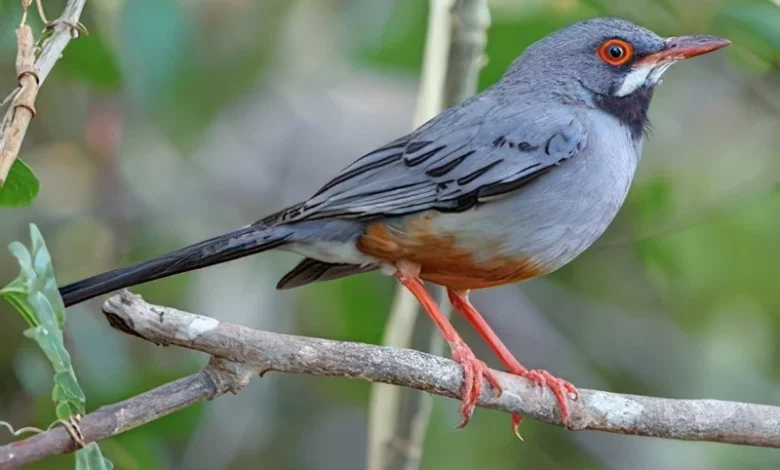Red-legged Thrush (Pyé-jòn)

The Red-legged Thrush (Turdus plumbeus), known locally in Dominica as Pyé-jòn, is a colorful and charismatic bird species that adds vibrant charm to the island’s biodiversity. Often spotted during early mornings along forest trails and near coastal communities, this thrush is a rewarding find for those passionate about hiking and birdwatching in Dominica.
Physical Description and Subspecies
The Red-legged Thrush measures approximately 27 cm (11 inches) in length and weighs around 75 grams. It is instantly recognisable by its reddish-orange legs, bill, and eye-ring, which contrast beautifully with its soft gray or bluish upper parts and white or pale belly. The Dominica subspecies, T. p. albiventris, exhibits slightly different coloring, characterized by a notably orange-tinted bill and feet, which gives it regional distinction among Caribbean thrush populations.
Habitat and Distribution in Dominica
In Dominica, the Red-legged Thrush is most commonly found south of Portsmouth, especially around the communities of Dublanc and Colihaut, and along roads leading to the Syndicate Nature Trail. It prefers subtropical and tropical forests, including both dry lowland areas and moist montane environments, and can also be seen in degraded forests and secondary growth near mountain villages.
This adaptability allows it to thrive not only in protected woodlands but also in disturbed habitats, where it frequently forages along the ground and among leaf litter—often compared to the behavior of an American Robin.
Diet and Behavior
The Red-legged Thrush is omnivorous, feeding primarily on fruits, but it also consumes insects such as caterpillars, beetles, ants, crickets, and wasps. It has been recorded eating snails, lizards, frogs, and even small eggs when available. This opportunistic diet supports its survival in varied habitats. Its behavior includes a confident, ground-foraging style and occasional short hops between branches as it scans for food.
Ecotourism and Conservation Value
For those exploring Dominica’s wildlife offerings, spotting the Pyé-jòn is a special moment. The bird is frequently encountered along routes such as the Syndicate Nature Trail, a well-known path for observing many of the island’s endemic species. Its vibrant appearance and adaptability make it a key ambassador for eco-tourism and environmental appreciation in Dominica.
Although not currently considered threatened, ongoing forest conservation and habitat protection are important to ensure that the Red-legged Thrush continues to flourish across the island’s diverse landscapes.




